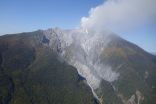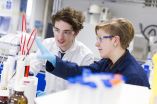Warning to DIY enthusiasts & construction workers as dangerous dust emissions
2015-08-19
(Press-News.org) Scientists at the University of Surrey found peak concentrations of potentially harmful ultrafine particles reach up to 4000 times local background levels when undertaking building activities such as drilling. Breathing of these particles is linked with serious cardiovascular and respiratory system related diseases, with ultrafine particles penetrating deeper into the lungs.
The researchers also found that the greatest ultrafine particle emissions occurred during wall chasing (cutting grooves into a wall using an electrical tool, for example to lay electrical cables).
Team lead and the corresponding author Dr Prashant Kumar from the University of Surrey said: "There has been an increase in refurbishment work in the UK, with a much greater focus on improving existing buildings rather than constructing new ones. The market for DIY refurbishment is also growing, as people try to add value to their homes rather than move."
"While this focus on renewing rather than replacing is great for sustainability, it is less positive for those working in and around these sites. With the potential to breathe in harmful dust particles including silicon, copper and aluminum, our research shows that we need more regulatory guidelines, not only to protect construction workers, but also to protect the general public.
"In the meantime, construction workers and those undertaking their own building projects, should always err on the side of caution and wear face masks when undertaking activities that could throw out dust. Some of the most harmful particles are invisible and we shouldn't underestimate the effect on our health, and on the health of those around us."
In another recent study, the team also found that ultrafine particles from building work travel for longer distances than those their larger-sized counterparts, resulting in exposure to on-site workers and personal exposure to passers-by and occupants of nearby buildings. They found that water sprays worked well to suppress the dust released.
INFORMATION:
ELSE PRESS RELEASES FROM THIS DATE:
2015-08-19
BOSTON, Aug. 19, 2015 -- Tomato lovers rejoice: Adding or rearranging a few simple steps in commercial processing could dramatically improve the flavor of this popular fruit sold in the grocery store, according to researchers.
The scientists will present new research on flavor-saving methods at the 250th National Meeting & Exposition of the American Chemical Society (ACS), the world's largest scientific society. The meeting features more than 9,000 reports on new advances in science and other topics. It is being held here through Thursday.
"Ideally, tomatoes should ...
2015-08-19
BOSTON, Aug.19, 2015 -- Cross contamination in commercial processing facilities that prepare spinach and other leafy greens for the market can make people sick. But researchers are reporting a new, easy-to-implement method that could eliminate or reduce such incidences.
The scientists will present their work at the 250th National Meeting & Exposition of the American Chemical Society (ACS), the world's largest scientific society. The meeting features more than 9,000 reports on new advances in science and other topics. It is being held here through Thursday.
Each year ...
2015-08-19
BOSTON, Aug. 19, 2015 -- Alcoholism inflicts a heavy physical, emotional and financial toll on individuals and society. Now new discoveries and promising animal studies are offering a glimmer of hope that a new class of drugs could treat the disease without many of the unwanted side effects caused by current therapies.
Researchers are presenting the results of their work today at the 250th National Meeting & Exposition of the American Chemical Society (ACS), the world's largest scientific society. The meeting features more than 9,000 presentations on a wide range of science ...
2015-08-19
University of Tokyo researchers discovered an increase in a helium isotope during a ten-year period before the 2014 Mount Ontake eruption in central Japan. The finding suggests that this helium isotope anomaly is related to activation of the volcano's magma system and could be a valuable marker for long-term risk mitigation concerning volcanic eruption.
Small quantities of the isotope helium-3 are present in the mantle, while helium-4 is produced in the crust and mantle by radioactive decay. A higher ratio of helium-3 to helium-4 therefore indicates that a sample of helium ...
2015-08-19
Seven million women a year in the developing world are treated in healthcare facilities for complications following unsafe abortion, finds a study published today (19 August) in BJOG: An International Journal of Obstetrics & Gynaecology (BJOG).
Every day, approximately 800 women die from preventable causes related to pregnancy and childbirth. Unsafe abortion accounts for 8 - 15% of maternal deaths and remains one of the leading causes of maternal mortality worldwide.[1] However, these figures do not take into account the number of women who are surviving but need hospital ...
2015-08-19
New research from the University of East Anglia could one day help build computers from DNA.
Scientists have found a way to 'switch' the structure of DNA using copper salts and EDTA (Ethylenediaminetetraacetic acid) - an agent commonly found in shampoo and other household products.
It was previously known that the structure of a piece of DNA could be changed using acid, which causes it to fold up into what is known as an 'i-motif'.
But new research published today in the journal Chemical Communications reveals that the structure can be switched a second time into ...
2015-08-18
A nine-gene molecular prognostic index (MPI) for patients with early-stage non-small cell lung cancer (NSCLC) was able to provide accurate survival stratification and could potentially inform the use of adjuvant therapy in patients struggling with the disease, according to a study published August 18 in the JNCI: Journal of the National Cancer Institute.
Non-small cell lung cancer (NSCLC) accounts for roughly 85% of all lung cancers, additionally; lung cancer is the leading cause of cancer death through out the world. While gene expression profiles have been shown to ...
2015-08-18
Alexandria, VA - The American Geosciences Institute's Center for Geoscience and Society is pleased to release two reports concerning geosciences education in the United States. The reports were developed in response to the need for comprehensive monitoring of the U.S. educational system in terms of the instruction of geoscience content and participation in geoscience-related learning experiences. The reports are based on data pertaining to science education collected from all 50 states and the District of Columbia.
The "Report on the Status of K-5 Geosciences Education ...
2015-08-18
COLUMBUS, Ohio - Scientists at The Ohio State University have developed a nearly complete human brain in a dish that equals the brain maturity of a five-week-old fetus.
The brain organoid, engineered from adult human skin cells, is the most complete human brain model yet developed, said Rene Anand, professor of biological chemistry and pharmacology at Ohio State.
The lab-grown brain, about the size of a pencil eraser, has an identifiable structure and contains 99 percent of the genes present in the human fetal brain. Such a system will enable ethical and more rapid ...
2015-08-18
Baltimore, August 18, 2015--Contact precautions are recommended by the Centers for Disease Control and Prevention (CDC) for all patients known to be infected with or carrying multidrug-resistant organisms (MDROs) such as methicillin-resistant Staphylococcus aureus (MRSA) and vancomycin-resistant Enterococcus (VRE). Yet, the use of contact precautions--which require a patient to be isolated in a single hospital room and health care providers to wear a gown and gloves when caring for patients--is widely debated in the medical community.
To help inform best practices, a ...
LAST 30 PRESS RELEASES:
[Press-News.org] Warning to DIY enthusiasts & construction workers as dangerous dust emissions

